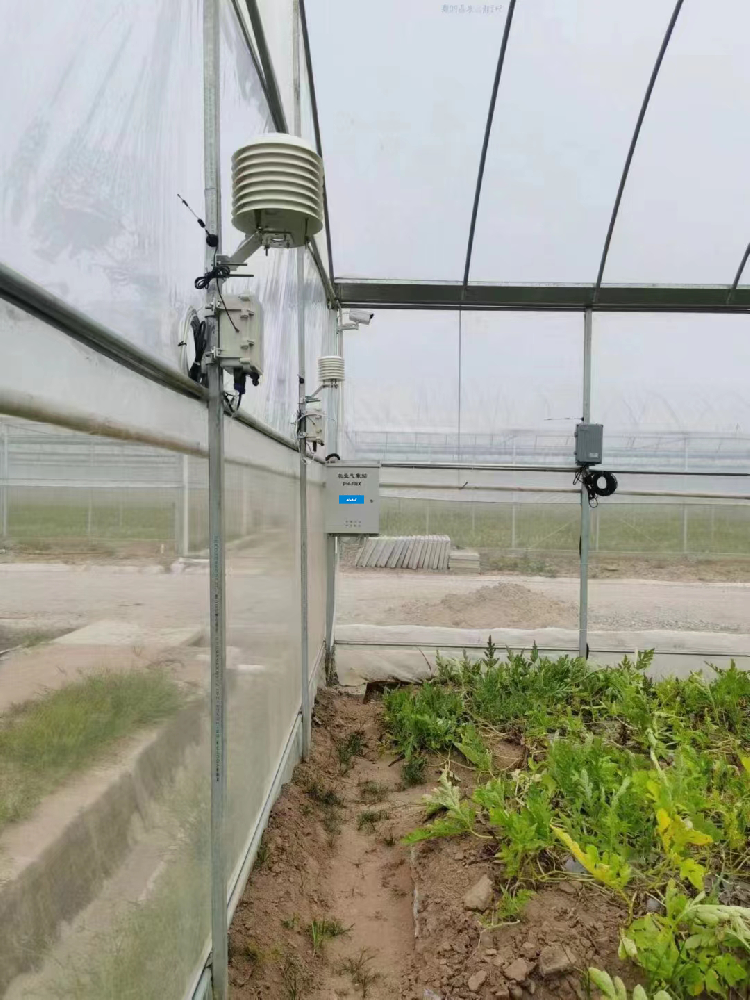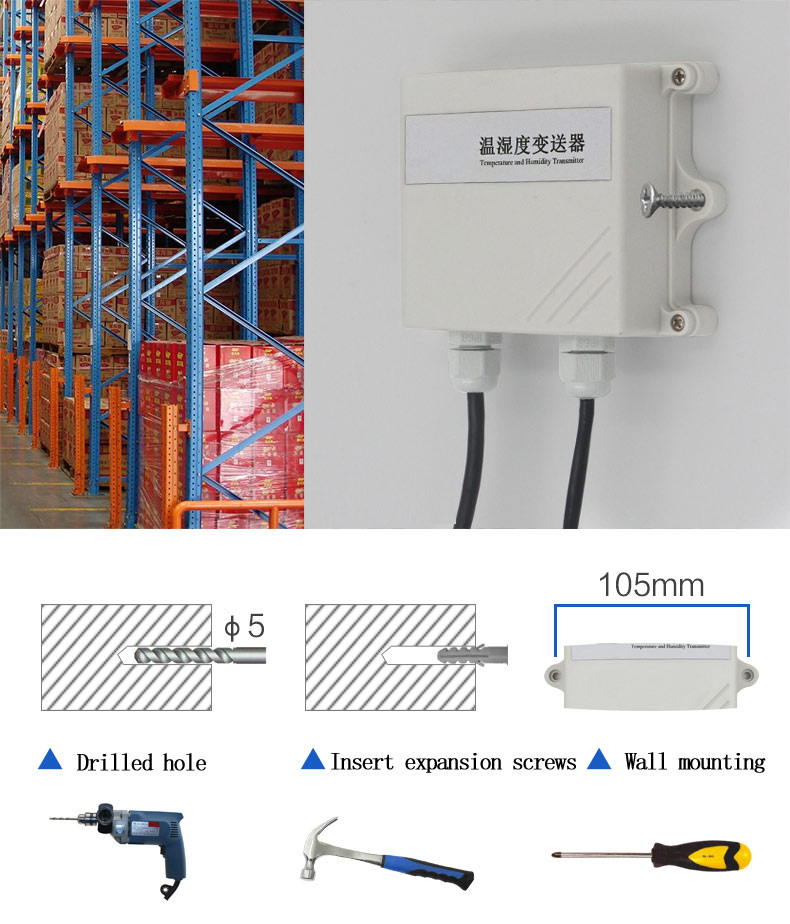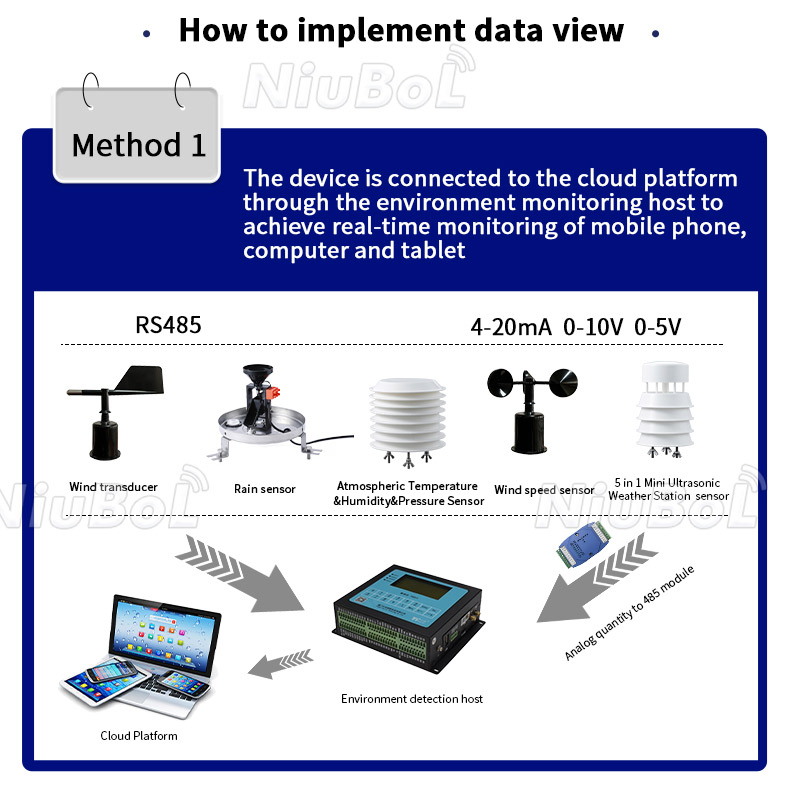

— Blogs —
—Products—
 Consumer hotline +8618073152920
Consumer hotline +8618073152920 WhatsApp:+8615367865107
Address:Room 102, District D, Houhu Industrial Park, Yuelu District, Changsha City, Hunan Province, China
Product knowledge
Time:2024-09-12 10:52:30 Popularity:1047
The RS485 temperature sensor is a specialized device designed for industrial and commercial applications that require accurate and reliable temperature monitoring. The sensor utilizes the RS485 communication protocol, which is the standard for serial communication of data over twisted pair wires. Due to its differential signaling method, it is particularly suitable for long distance transmission in noisy environments.
The RS485 temperature sensor is a temperature measurement device that uses the RS485 communication protocol for data transmission. The following is a detailed explanation of RS485 temperature sensor:
Definition: RS485 temperature sensor combines temperature measurement technology with RS485 communication protocol, which can measure the environmental temperature in real time and accurately, and transmit the data to a computer or other data acquisition devices through the RS485 interface.
Function: Mainly used in scenarios that require remote monitoring and recording of temperature changes, such as industrial automation, environmental monitoring, agricultural greenhouses, data centers and so on.

Temperature measurement: RS485 temperature sensor contains one or more internal temperature sensor components (such as thermistors, thermocouples or semiconductor temperature sensors), these components are able to sense the ambient temperature and convert it into an electrical signal.
Signal processing: the signal processing circuit to amplify the electrical signal, filtering and analog-to-digital conversion and other processing, the analog signal is converted to a digital signal.
Data transmission: the use of RS485 communication protocol, the processed temperature data through the differential signal line for long-distance, high-speed, stable data transmission.

1. Bidirectional communication: RS485 allows bidirectional communication through a single pair of wires. It can support multiple devices on the same bus, which makes it suitable for networking multiple sensors.
2. Long Distance Transmission: RS485 transmits data over distances of up to 1200 meters (approximately 4000 feet), making it suitable for application scenarios that require remote monitoring. It depends on the data rate and cable quality.
3. Differential Signaling: It uses differential signaling, which helps reduce the effects of electromagnetic interference and allows for better data integrity over long distances.

4. Multi-point capability: RS485 supports multi-point networks, which means that multiple devices can be connected on the same communication line.
5. Data Rate: RS485 supports data rates up to 10 Mbps, although in practice, for most sensor applications, lower data rates are typically used.
6. Easy to install and maintain: the sensor structure is relatively simple, easy to install; at the same time, the RS485 interface has a wide range of compatibility, easy to connect and integrate with other devices.

1. High accuracy: RS485 temperature sensors are known for their high accuracy in measuring temperature. They typically use digitally integrated sensors that provide reliable digital processing circuitry to convert the ambient temperature into the corresponding RS485 signal.
2. Industrial Grade: These sensors can withstand harsh industrial environments. They are usually waterproof, dustproof, and can operate over a wide temperature range, making them suitable for both indoor and outdoor applications.
3. RS485 Communication: The RS485 interface allows multiple sensors to be connected on the same network for centralized monitoring and control. This feature is especially useful in factory automation, process control systems and other applications where multiple temperature points need to be monitored simultaneously.
4. Modbus Compatibility: Many RS485 temperature sensors are compatible with the Modbus protocol, a widely used standard for connecting industrial electronics. This compatibility facilitates integration with existing control systems and data acquisition networks.
5. Versatile Applications: RS485 temperature sensors are used in a variety of applications including building automation, climate control, HVAC systems, greenhouse monitoring, pharmaceutical and chemical industries. They can also be integrated with IoT (Internet of Things) systems for remote monitoring and data analysis.
6. Installation Flexibility: Depending on the model, RS485 temperature sensors can be wall-mounted or mounted in a variety of locations to meet specific monitoring needs. Some sensors are designed for soil moisture and temperature monitoring, which is critical for agriculture and horticulture.
7. Data Transmission: Data collected by RS485 temperature sensors can be transmitted to a server via cellular network (2G/3G/4G), allowing remote real-time monitoring and analysis.

Industrial automation: for temperature monitoring on production lines to ensure the stability of the production process and product quality.
Environmental monitoring: used in weather stations, environmental monitoring stations and other places, continuous monitoring of atmospheric temperature.
Agricultural greenhouses: to help growers understand the temperature conditions in the greenhouse, providing a basis for regulating the greenhouse environment.
Data center: used to monitor the operating temperature of servers, switches and other equipment to ensure the stable operation of the data center.
In summary, RS485 temperature sensors are powerful, stable temperature measurement devices that provide accurate temperature measurement over long distances and in challenging environments. Their compatibility with industry-standard protocols and ability to integrate with modern data networks make them an important tool for industrial and commercial temperature monitoring applications, with a wide range of applications in multiple fields.
NBL-W-LBTH-Atmosphere-temperature-humidity-and-pressure-sensor-instruction-manual-V4.0.pdf
NBL-W-WHT-Wall-Mounted-Temperature-Humidity-Sensors-Instruction-Manual.pdf
Related recommendations
Sensors & Weather Stations Catalog
Agriculture Sensors and Weather Stations Catalog-NiuBoL.pdf
Weather Stations Catalog-NiuBoL.pdf
Related products
 Combined air temperature and relative humidity sensor
Combined air temperature and relative humidity sensor Soil Moisture Temperature sensor for irrigation
Soil Moisture Temperature sensor for irrigation Soil pH sensor RS485 soil Testing instrument soil ph meter for agriculture
Soil pH sensor RS485 soil Testing instrument soil ph meter for agriculture Wind Speed sensor Output Modbus/RS485/Analog/0-5V/4-20mA
Wind Speed sensor Output Modbus/RS485/Analog/0-5V/4-20mA Tipping bucket rain gauge for weather monitoring auto rainfall sensor RS485/Outdoor/stainless steel
Tipping bucket rain gauge for weather monitoring auto rainfall sensor RS485/Outdoor/stainless steel Pyranometer Solar Radiation Sensor 4-20mA/RS485
Pyranometer Solar Radiation Sensor 4-20mA/RS485
Screenshot, WhatsApp to identify the QR code
WhatsApp number:+8615367865107
(Click on WhatsApp to copy and add friends)
